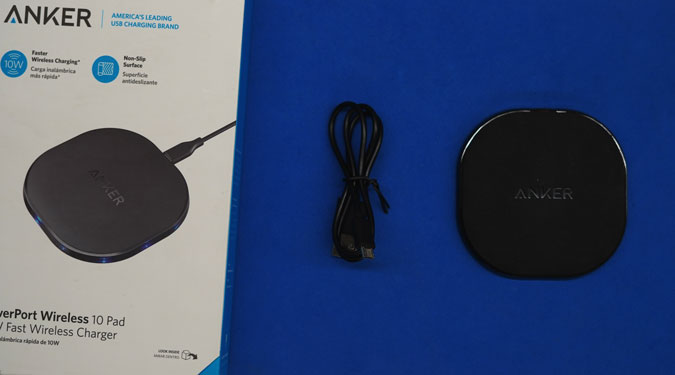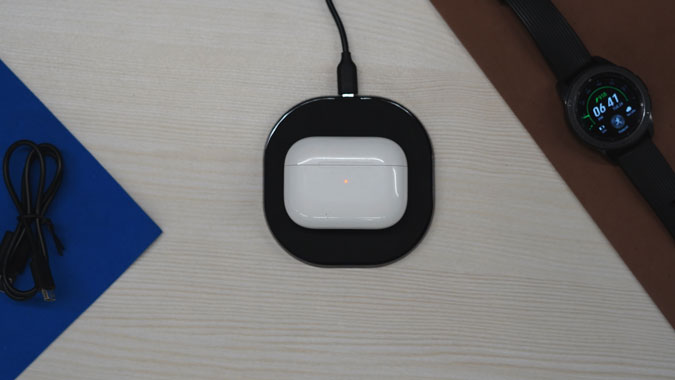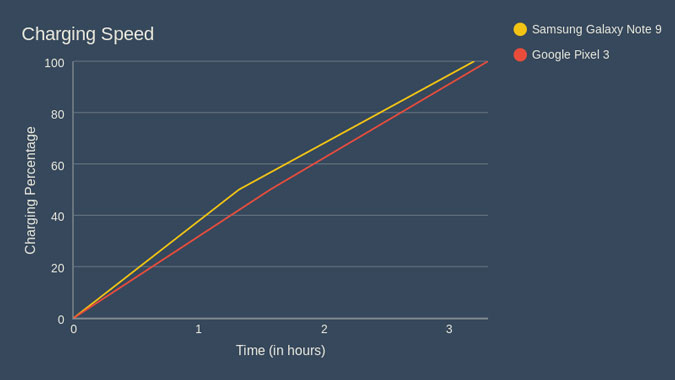Earlier, I reviewed the Xiaomi 10W wireless charger and it turned out to be one of the best 10W wireless chargers in the market. But, unfortunately, it is not available in India. Next up, I got my hands on a 10W wireless fast charger from Anker. It had similar specs when compared to the Mi Wireless charger with a couple of caveats.
So, is the Anker Wireless charger the answer to all your wireless charging needs? Moreover, how does it compare to the Mi Wireless charger or the cheaper Amazon Basics 10W wireless charger? Well, I have listed all of that down and here’s my review of the Anker 10W Qi Wireless charger.
Anker 10W Qi Wireless Charger – Worthy Enough?
While we are getting 65W wired fast chargers popping around, the wireless charging tech is still limited to 10W. To add to that, only a few numbers of smartphones like Samsung Note and S series, Pixel 4 supports 10W fast wireless charging. So, there’s a lot of if’s and but’s when it comes to wireless charging. Oneplus phone still don’t support wireless charging. With that out of the way, here is what you get in the box.
Foremost, I liked the box of the Anker Wireless charger. It opens up like a notebook to give you a glimpse of the wireless charging pad. The case slides out from the bottom with a micro-USB charger and a wireless charging pad.

1. Design & Build Quality
In the first impressions, the Anker wireless charging pad looks a lot slim and sleek than the others I have used. Compared to the Mi Wireless charger, the Anker one is quite thin at 1 cm. It also has an anti-slip surface so in case you receive a call or a notification, the device won’t slip off the charging pad.
Additionally, it also has rubberized feet at the bottom to ensure it firmly stays at a single place. The only part to complain about is the plastic build of the wireless charger. Plastic does have good shock absorption properties but it is less durable in the long run. However, it does help to cut down weight and the Anker Wireless charger weighs around

2. Charging Process
So, you might see numerous wireless chargers on the market. Most of them have a similar charging process but you need to look out for the Qi wireless compatibility. With Qi compatibility, you would be ensured that almost all of your wireless devices would be compatible with the charger. Coming down to the process, in order to charge a device, you have to place it at the center of the Anker charging pad right on top of the Anker logo.
Once the device starts charging, a subtle blue LED glows at the bottom to notify charging is initiated. This really comes in handy in the night when I have to slap off my device on the charging pad. The subtle blue lights work better than a small LED indicator.

The Anker wireless charger is powered by a micro-USB cable which is the biggest bummer. Most of the flagship devices are powered by type-C cables. The rest of the smartwatches or wireless charging devices have a proprietary charger. So, in addition to these cables, I would also have to carry an extra micro-USB cable for the Anker wireless charger. A type-C input would have eased things out and enabled me to use my regular smartphone charger with it.
Moreover, the wireless charging even works through the charging case if it is less than 5mm in thickness.
3. Charging Speed
The Anker wireless charger charges in 2 different modes: 5W and 10W. The 5W is the slow charging mode that would be applicable to most of the devices except a few flagship phones like the Samsung Galaxy Note and S series, Pixel 4, etc. Comparatively the Mi Wireless charger charges at 3 different modes – 5W, 7.5W, 10W. This turns out to be slightly better if you own an Apple device. For instance, in the case of the iPhone 11 Pro or XS Max, they have a maximum input of 7.5W. With the Anker charger, they will charge at 5W since it doesn’t support 7.5W. So, have a look at your maximum wireless charging input before buying a wireless charger.
To give you a perspective about charging speeds, we put a Samsung Note 9 and Pixel 3 to charge wirelessly on the Anker wireless charger.
Ideally, if you have a wireless charging device like Galaxy Buds, smartwatch, they may be limited to the 5W charging limit which is quite slow. Hence, in order to provide a reference to the charging speeds, I tested Samsung Note 9 and the Pixel 3. The Samsung Note 9 charges at faster 10W whereas, the Pixel 3 charges at 5W. This will provide you a reference point about the speed of wireless charging.

| Device Name | Charging Percentage | Time (hours) |
| Samsung Note 9 (4000 mAh) | 0 | 0 |
| 50 | 01:32 | |
| 100 | 03:20 | |
| Google Pixel 3 (2915 mAh) | 0 | 0 |
| 50 | 01:57 | |
| 100 | 03:31 |
If we look at the data, the Pixel 3 and Samsung Note 9 took almost the same amount of time. However, Note 9 has a bigger 4000 mAh battery and Pixel 3 has a 2915 mAh battery. If we take that into account, Pixel 3 took the same amount of time with a 27% smaller battery. This shows that the Note 9 charged at 10W speed while Pixel 3 charged at 5W speed.
Conclusion – Should you buy it?
The Anker wireless charger doesn’t offer a lot more than the Amazon Basics charger. The Amazon Basics can draw the same output of 10W but has a slightly inferior build. Hence, the extra bucks are not worth spending. In case you can import a wireless charger from China, you cannot go wrong with the Mi Wireless charger which holds compatibility for any device.
With that said, it only makes sense to get a wireless charger if you have multiple wireless charging devices lying around. If you have a single device that wirelessly charges, just stick to the wired charger. It is much faster and you wouldn’t have to wait a decade for the device to fully charge. However, if you have multiple wireless devices, you can quickly stick one of your devices on the charging pad while the other one is being used. Like, I would any day charge my Galaxy watch on these rather than the proprietary Samsung charger.
Anker cannot wirelessly charge the smaller 42mm Galaxy Watch.
To summarize the entire review, below are the pros and cons.
If you have any queries or issues regarding wireless charging, do let me know in the comments below.
Also Read: Airpods Pro Tips, Tricks, and Hidden Features